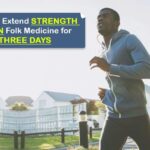Table of Contents
For patients with kidney disease, it is important to be aware of the amount of “potassium” intake. But what kind of vegetables does potassium specifically contain?
We will also explain the “low-potassium vegetables” currently attracting attention and how to control potassium intake.
What are the benefits of taking potassium?
Potassium, along with other electrolytes such as sodium, regulates the osmotic pressure of cells and is responsible for maintaining the body.
In addition, potassium is involved in nerve function and heart/muscle movement and can be one of the very important nutrients for humans.
For this reason, it is necessary to eat foods rich in potassium to prevent potassium deficiency actively.
However, when the function of the kidneys deteriorates, the amount of potassium excreted decreases, and it may quickly accumulate in the body.
Potassium deficiency can also be a health, but excess potassium can cause fatal arrhythmias, so people with kidney disease should limit their potassium intake.
Follow the instructions of your doctor or dietitian on how to limit your diet.
What are potassium-rich vegetables?
Vegetables that are rich in potassium include:
Spinach
Spinach contains the most potassium among vegetables and contains 690 mg of potassium per 100 g of edible portion. However, it is said that about 45% of potassium dissolves in the boiled juice when boiled.
Bamboo shoots
Bamboo shoots contain 520 mg of potassium per 100 g. However, like spinach, it is said that about 30% of potassium is removed by boiling.
Potatoes
Potassium is also known as vegetables with high potassium content. In particular, the potassium content of taro and yam is high, the content of taro is 640 mg per 100 mg, and that of yam is 590 mg per 100 g.
Green soybeans
Edamame contains 590 mg of potassium per 100 g. This is the same number as yam. However, unlike yam, the amount of potassium that can be ingested is inferior because it needs to be boiled and eaten.
Is Potassium Also Found In Fruits And Drinks?
Potassium is also abundant in fruits and drinks.
Fruits high in potassium
The fruit with the highest potassium content is banana, which contains 540 mg of potassium per 150 g.
Summer oranges
285 mg per 150 g
Hassaku
270 mg per 150 g
Iyokan
228 mg per 120 g
Orange
114 mg per 120 g
Mandarin orange
130mg per 100g
Grapefruit
140mg per 100g
It is also abundant in citrus fruits such as.
In addition, persimmon (170 mg per 100 g), kiwi (290 mg per 100 g), and melon (272 mg per 15 g) are also potassium-rich fruits.
Drinks high in potassium
The drink that contains the most potassium is green tea, which is said to have 408 mg of potassium per cup (120 ml) of hot water.
In addition, vegetable juice (100%) is 400 mg in 200 g, apple juice (100% concentrated reduction) is 220 mg in 200 g, orange juice (100% concentrated and reduced) is 380 mg in 200 g, and beverages containing vegetables and fruits are included. The amount tends to be large.
What are the benefits of eating low-potassium vegetables?
When renal function declines, the ability to excrete potassium from the body declines and potassium accumulates in the body, resulting in serious illnesses such as hyperkalemia. This makes it necessary to limit potassium intake.
It also has the effect of promoting the excretion of sodium, so it also affects lowering blood pressure. Vilitra 40 and Cenforce 150 to help improve intimate life.
However, if you use a cooking method that emphasizes low potassium, other nutrients will be impaired, and a decrease in the intake of vegetables themselves will lead to a decrease in the information of dietary fiber, which may lead to constipation.
Therefore, low-potassium vegetables are currently attracting attention. Low-potassium vegetables are vegetables that can be eaten deliciously without the hassle of boiling and reducing the potassium content by reviewing the vegetable production from the growth method. It is currently attracting attention from people with potassium restrictions.
How to adjust the intake of potassium by devising the cooking method of vegetables?
By devising the cooking method of vegetables, you can get the appropriate potassium amount for each condition.
The point to devise is “whether to expose to water.” Potassium is water-soluble and has the property of being soluble in water. Therefore, if you want to take potassium efficiently, it is desirable to use a cooking method that allows you to wash it quickly and take it raw, or to drink boiled juice such as soup or soup together, without exposing it to water as much as possible.
If you want to refrain from potassium intake, cooking methods such as exposing to water or boiling and spilling are effective. Vilitra 20 helps effective ed. It is said that about 30% of potassium is removed by this method. Also, if you cut it into small pieces and spill it, potassium will be easily removed.
Conclusion:
Potassium is abundant in what we casually consume in our daily lives. Eating a potassium-conscious diet is essential for people with potassium restrictions. Choose the ingredients that suit your condition and adjust your potassium intake by devising cooking methods.

